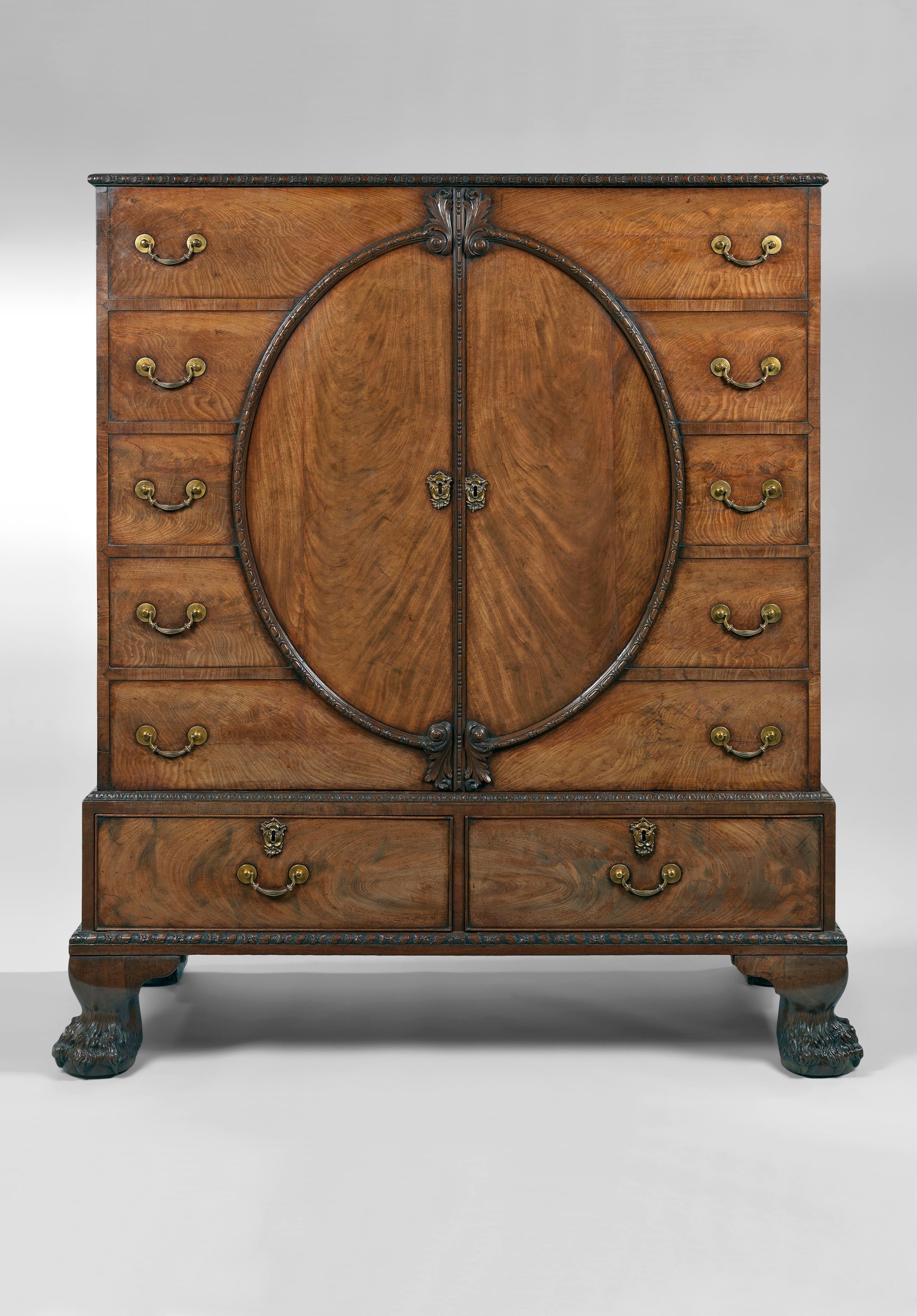
Circa 1760
A George III Mahogany Cabinet Attributed to William Vile, Circa 1760

Provenance
Braxted Park, Essex
Braxted Park is first recorded as being a Deer Park in 1342 when it belonged to the Countess of Pembroke, prior to the purchase of the estate in 1650 by Thomas Darcy. His son, Thomas Darcy, abandoned the old house, which was situated close to Braxted church, and built Braxted Lodge on the site of the present house in 1680. In 1708 the park was described as having been extended to 300 acres with three large ponds. The estate was then purchased by Peter Du Cane, a cloth merchant and entrepreneur. He reconstructed the house with the help and advice of Isaac Ware, Thomas James and Robert Taylor. Peter lived at Braxted Lodge from 1751 until his death at the age of 90 in 1803. Peter Du Cane then inherited the park at the age of 62 and proceeded to carry out extensive alterations to the house and park. Du Cane died in 1823 and the estate was passed to his son Peter Du Cane, who renamed the house Braxted Park. Peter Du Cane died in 1841 and the estate was passed on to his cousin Charles Du Cane who maintained the estate in much the same condition. The estate was finally sold by the Du Cane family to William Boulton in 1919, who then sold it to The Plessey Company in 1947. The house was occupied by Sir Allen Clark, chairman of the company and subsequently by his son, Michael Clark. The estate is now owned by a family trust and managed by Sir Allen Clark’s grandson, Duncan Clark who came out of a 17 year banking career in the City to devote all his energies full time to making Braxted a thriving and self sufficient diversified rural business.
Measurements
| DIMENSIONS | CM | INCHES |
|---|---|---|
| Width: | 122 | 48 |
| Depth: | 63.5 | 25 |
| Height: | 155 | 61 |